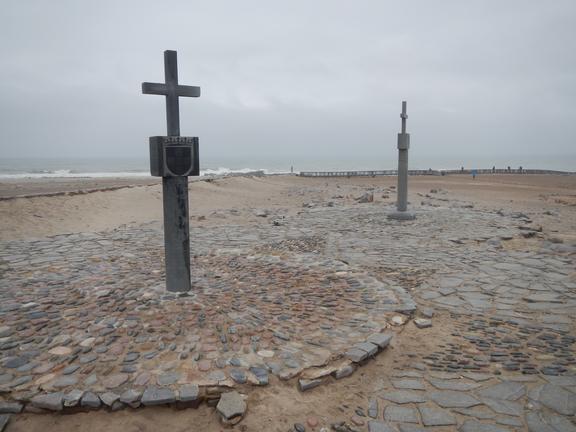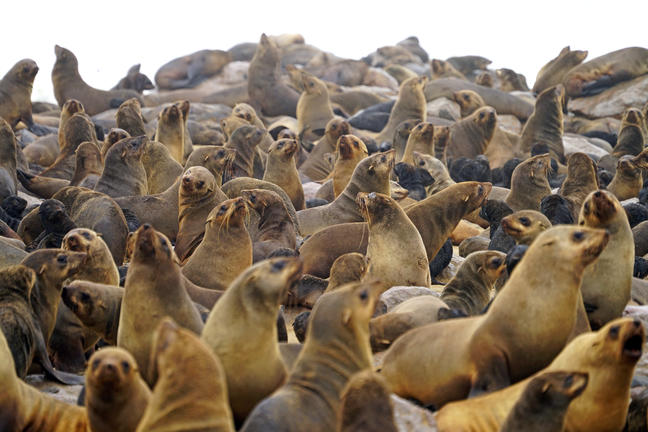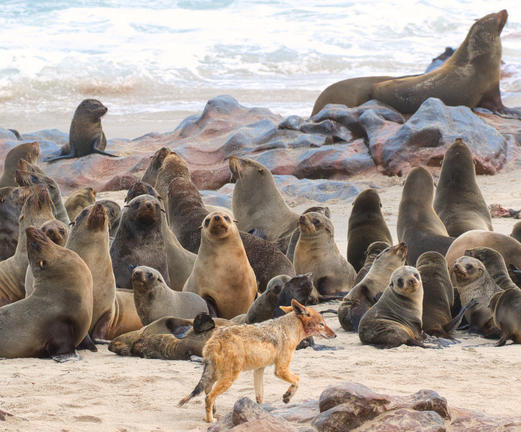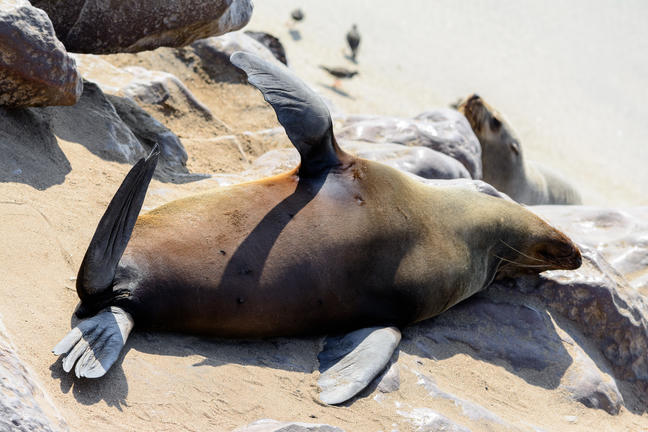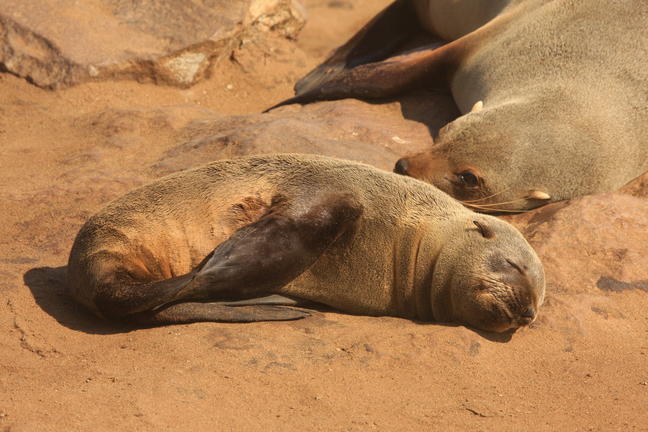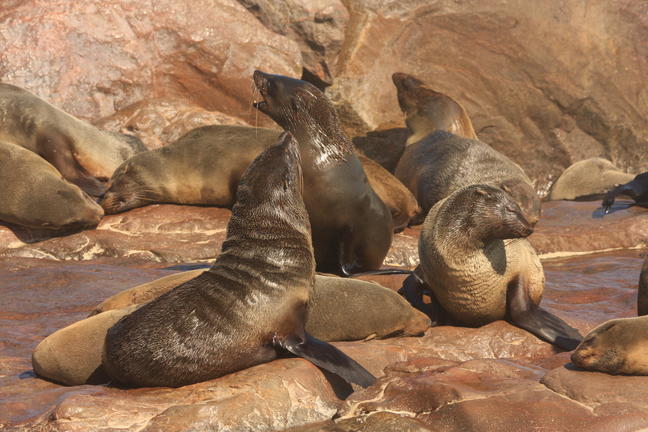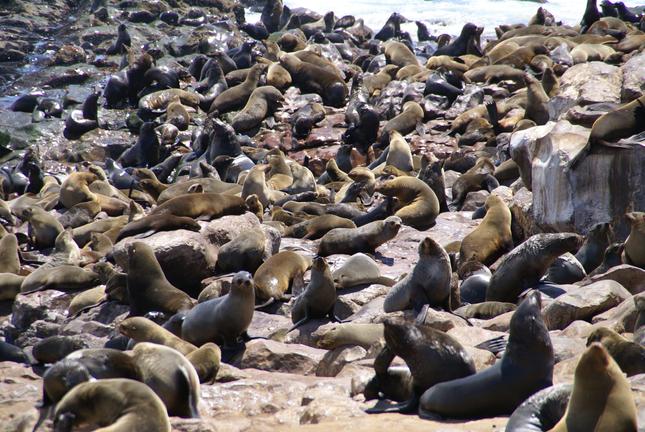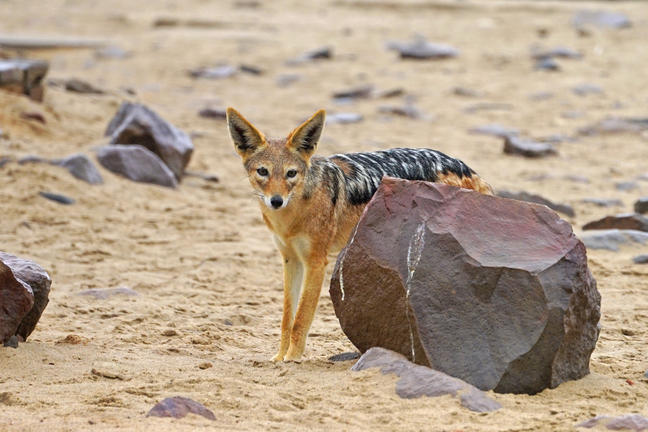Cape Cross has both historic and biological significance and is a popular tourist attraction. The Portuguese navigator, Diego Cão, landed here in 1486 on his second expedition south of the equator and planted a stone cross (padrão) to mark his journey. A replica is visible here today. Inclusive of a second replica, the area has been listed as a National Heritage Site. In the late 1800s, thousands of tons of guano (dried excrement of fish-eating birds used as fertiliser) were collected and exported to Europe. Cape fur seals were also harvested. About 100 workers lived at Cape Cross and a police station, customs and post office were established at the settlement, while a railway (the first in the country) was built to cross the salt pan and transport workers. Many men lost their lives due to the harsh conditions at Cape Cross.
This reserve is a sanctuary for the world’s largest breeding colony of Cape fur seals, with up to 210 000 seals present during the breeding season in November and December. Sustainable seal harvesting takes place in the reserve annually under the auspices of the Ministry of Fisheries and Marine Resources, which also sets the quota of seals to be harvested.
Park size: 60 km²
Proclamation: 1968
Natural features: Rocky bay, sandy beaches, salt pan
Vegetation: Central Desert in the Namib Desert Biome. Vegetation:Sparsely vegetated, with dollar (Zygophyllum stapfii) and pencil bushes (Arthraerua leubnitziae) dominating. A variety of lichens occur in the park.
Wildlife: Brown hyaena, Cape fur seal, Black-backed Jackal at the Guano platforms, Greater and Lesser Flamingo,Grey Phalarope, Damara Tern, Cape Teal, Caspian Tern, Black-necked Grebe and African Black Oystercatcher.
Tourism: This is one of Namibia’s most visited parks. New facilities include a walkway enhancing viewing of the seals, information signs along the walkway, renovated picnic areas, five campsites with fireplaces, and timber-plastic wind shields. Accommodation is available at a private lodge bordering the park; camping is available at Mile 72 and Mile 108. Cape Cross is a gateway to the Messum Crater and the Brandberg Mountain to the east and Skeleton Coast Park to the north. Bird platforms in the south of the park are closed to the public. No angling is allowed.
The Cape Cross Seal Reserve is a sanctuary for the world’s largest breeding colony of Cape fur seals (Arctocephalus pusillus), with up to 210 000 seals present during the breeding season in November and December.
